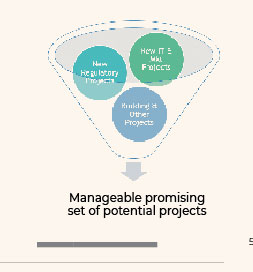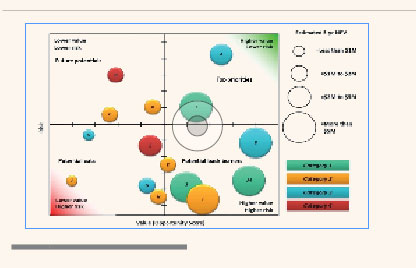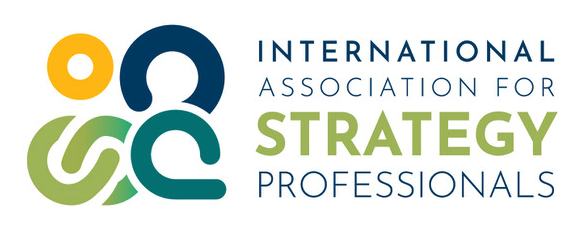By Nick Hadjinicolaou
ABSTRACT
To succeed in its strategic endeavors, an organization must do more than formulate a winning strategy – it must implement and execute that strategy in an effective, efficient, and agile manner. Yet, there are many reasons why strategy implementation continues to be challenging. Successful implementation is hindered when current and future projects are not visible, or worse, not aligned with the strategy. A practice of active portfolio governance would assist with alignment, decision making and overall transparency, enhancing strategy implementation. The objective of this article is to present the novel practice of strategic portfolio management, and a number of related techniques for successful implementation of the organization’s strategy
To succeed in its strategic endeavors, an organization must do more than formulate a winning strategy – it must implement and execute that strategy in an effective, efficient, and agile manner. Successful strategy implementation entails identifying, sequencing and undertaking “transformational” projects* and programs that align the organization’s operating model to the new strategy, thereby enabling strategy execution.2 Yet, there are many reasons why strategy implementation continues to be challenging. Successful implementation is hindered when current and future projects are not visible, or worse, not aligned with the strategy.
Additionally, without this transparency, conflicts arise within the organization over resource allocation and workloads.3 A practice of active portfolio governance would assist with alignment, decision making and overall transparency, enhancing strategy implementation. The objective of this article is to present the novel practice of strategic portfolio management, and a number of related techniques for successful implementation of the organization’s strategy.
What is Strategic Portfolio Management (SPM)?
To effectively delve into Strategic Portfolio Management (SPM), we must first understand project portfolios. A project portfolio is a group of “projects, programs, subsidiary portfolios, and operations managed as a group to achieve strategic objectives”.1,4 Strategic Portfolio Management, therefore, is the process that supports the selection and prioritization of the right projects to meet strategic objectives and improve project success rates to deliver strategy. SPM requires transparent support structures and processes so that the organization understands the decisions made on how best to use the available limited resources, manage operations, the necessary balance of project and portfolio risk, along with other considerations such as governance and even the selection of projects based on strategy alignment. Scaling the decision-making processes for project portfolio selection, tools and capability for the desired benefits will have a profound impact on project and organizational success.5
The goal of strategic portfolio management is to balance successful achievement of the strategy with the risk of change to business-as-usual, in order to deliver strategy and maximized resource utilization.6 When done well, SPM can provide the following benefits and alleviate most of the challenges in strategy implementation:
1. Ensure projects are aligned with strategy
2. Provide visibility of current and proposed future projects to identify gaps and improve resource utilization
3. Improve performance and stakeholder engagement to achieve organizational goals
4. Engage executives with active portfolio governance for improved decision making
5. Manage conflicts of ongoing operational workload to optimize resource utilization
6. Identify gaps in capability and capacity of resources to achieve outcomes
7. Manage risk and change management to improve organizational performance
Key Practices in SPM
While there are many SPM practices, six are particularly important and demonstrate how SPM can be utilized to successfully implement an organization’s strategy.
1. Strategic Management Office (SMO) – A key component of the initial implementation and management of SPM, this “office,” or group within the organization, is tasked with managing the complete SPM processes. The SMO provides ongoing change management, coordination of training, oversight of risk and assistance with operational transition that facilitates strategy. This office is also responsible for implementing and managing the five techniques that follow.
2. Project Repository – Critical to the strategic portfolio management process is the creation of a repository of all previously approved projects within an organization over a given threshold. Collected project information should include dependencies, the total approved budget, estimated spend by set time periods, current funds spent to date, organizational value, strategic alignment, cost, and risk ranking. Ideally, the repository also shows dependencies between projects. It is helpful to have this information available within the organization in a dashboard format, as this tool becomes an important part of decision making due to the detailed visibility of all approved projects. The goal is to enable stronger decision making for approved projects, potential cuts, possible back-burners and top priorities.

3. SPM Project Pipeline – Based on upcoming strategic initiatives, all potential new projects are identified throughout the organization. These projects can be classified as discretionary (can do), non-discretionary (must do), and other project categories. Project details should include cost and time, alignment to strategy, benefits, risks, availability of funding, and capability of internal resources to facilitate approval. Using the funnel concept shown in Figure 1, these potential projects go into a pipeline that reduces the number of potential projects into a more manageable, promising set of potential projects.
4. Project Portfolio Bubble Chart – The potential projects in the manageable, promising set are then further analyzed. They are prioritized by scoring on criteria such as capability, capacity, level of strategic alignment and other organization specific criteria, using tools such as the project portfolio bubble chart (PPBC) (adapted from the four quadrants of the BCG Matrix). PPBC represents a graphical view of the potential projects in the manageable promising set to assist in the decision making process. Each potential project is placed into one of four quadrants based on value and risk in terms of probability of success (Figure 2). This sorting technique enables the identification of projects that could drive greater value or alignment to the organization’s strategy. Potential projects can also be placed into categories depending on their type (i.e., regulatory, systems, infrastructure, new products) to align budget allocations.
5. Portfolio Stage Gates – This technique of creating prescribed approval points is a component of effective governance. The portfolio stage gates can vary, be built around the lifecycle of a project, used to improve decision-making, and control for project spend. The first stage gate is typically the approval of the initial business cases of the proposed projects in the manageable, promising set, taking into account the results of the PPBC. The proposed projects approved at this gate can then be added to the project repository and proceed with funding to complete the detailed planning and costing stage. At stage gate 2, approvers might assess how detailed estimates of a project align with initial estimates in order to assess whether it can pursue its course or needs to be halted. During stage gate 3, the execution of a project is further examined to assess whether it can pursue its course or needs to be halted. And this process continues until the completion of the project. The comparison of estimates to actual spend enables progress to be monitored and decide whether funding will be approved at each stage of the project. The portfolio stage gate process is managed through the strategic management office and the executive steering committee that approves project funding. Stage gates give decision makers control and time to scan the environment of the current project pipeline, shifting priorities and/or budget demands. Stage gates also improve organizational project management and SPM maturity due to the ongoing assessment of projects balanced against the current project pipeline.
Monthly collection of project information enables tracking of all work and is a key component of the stage gate process. It is important that accurate project scoping and inherent risk analysis is conducted prior to commencement to enable informed go/no go decision making by the executive team.

6. Strategic Portfolio Management (SPM) Roadmap – Finally, a roadmap will serve as the guide to the later activities of the SPM process.6 The high-level roadmap should be time bound, begin at the current state, include the findings of the previous four techniques, account for training and remain in effect until the strategy has been achieved. A more detailed roadmap should include all approved projects on a timeline matched to the strategy these projects help accomplish. Table 1 provides a high-level overview of each SPM tool with the benefits provided to strategy implementation.
Conclusion
This paper highlights the benefits of Strategic Portfolio Management (SPM), the associated “office,” SMO, and five related SPM techniques that organizations can use to successfully implement their strategy. To further improve decision making, control and agility, organizations will need to provide more visibility of current and proposed future projects, as discussed above. The outlined practices assist the practitioner with optimizing resource utilization and decreasing operational workload conflicts as organizations seek to balance risk and change. SPM ultimately complements the enterprise architecture approach7 to achieve organizational goals and reap long-term, strategic success. SPM practices, and an enterprise architecture approach, will support the level of project management and operational maturity levels necessary to improve organizational efficiency.8
REFERENCES
1 Project Management Institute (2021) A guide to the project management body of knowledge (PMBOK® Guide) (7th ed). Project Management Institute, Newtown Square, PA.
2 Hadaya, P., & Gagnon, B. (2020) Mapping an agile future. Strategy Magazine, 35, p.18-21.
3 Hadjinicolaou, N., & Dumrak, J. (2017) Investigating association of benefits and barriers in project portfolio management to project success. Procedia Engineering, 182, p.274-281.
4 Project Management Institute (2017) The standard for portfolio management (4th ed). Newtown Square, PA.
5 Crawford, L., Hobbs, J.B. & Turner, J.R. (2006) Aligning capability with strategy: categorizing projects to do the right projects and to do them right. Project Management Journal, 37, p.38-50.
6 Hadjinicolaou, N., Kader, M., & Abdallah, I. (2022) Strategic innovation, foresight and the deployment of project portfolio management under mid-range planning conditions in medium-sized firms. Sustainability, 14(1), p.80.
7 Hadaya, P., & Gagnon, B. (2021). Making the promise of strategy a reality with the enterprise architecture approach. Strategy Magazine, 36, p.18-21.
8 Hadjinicolaou, N., Dumrak, J., & Mostafa, S. (2020) Relationship investigation of organizational agility characteristics and portfolio management maturity. MATEC Web of Conferences (Vol. 312, p.02011). EDP Sciences.







